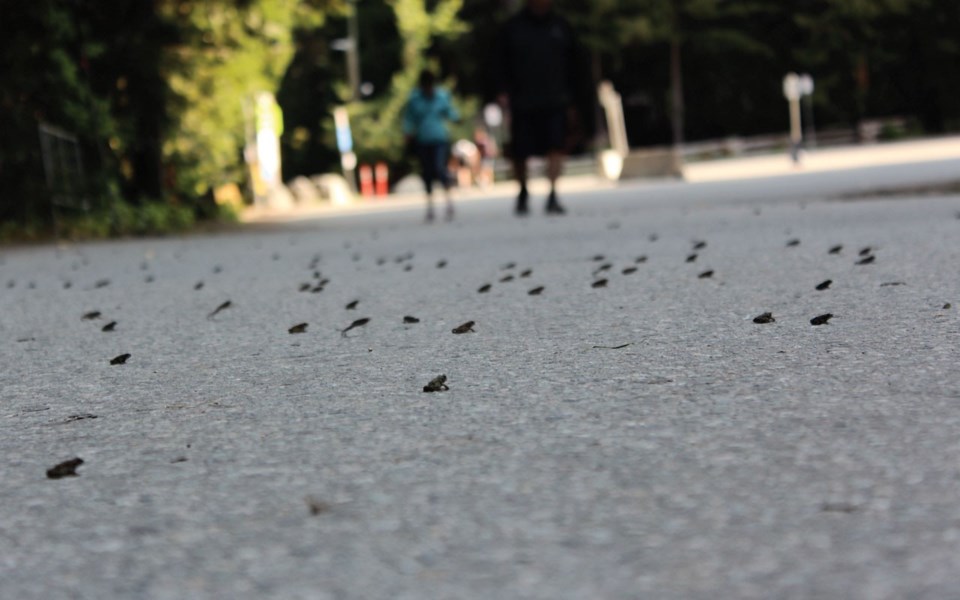Whistler's Western toad migration is almost done!
If you've been up at Lost Lake recently, you may have seen these tiny toads behind the black barriers in the wetlands or crossing the paths around you. You may have even helped us move them off the path (thank you!).
Just in case you didn't have a chance to see them or to speak with one of the Nature Interpreters at our Discover Nature booth, we'll be providing answers here to some of the questions people have about the toads and the steps taken to protect them.
Every spring, a female Western toad will lay approximately 12,000 eggs in shallow water. These eggs become tadpoles in just three to 12 days and are ready to leave the water after six to eight weeks. At Lost Lake, this means crossing the beach, the Valley Trail and the road to join the adult Western toads in the forests and grasslands. In nature, less than one per cent of these toads make it to breeding age. It is our responsibility to make sure human activities don't increase their mortality rate.
To help the toads survive this journey, the RMOW is working towards a more "toad friendly" environment around Lost Lake Park. Barriers and fences have been put in place to direct toads towards the forest and nature interpreters from the Whistler Museum's Discover Nature program educate passersby about this sensitive and protected species.
At some point, the toads must cross the Valley Trail and Lost Lake Road on their way to the upland forest areas where they will hibernate for the winter. To protect them on their journey, Lost Lake Road is closed and people are asked to please watch their step and walk their bikes.
Although the toads are pretty cute, visitors to Lost Lake are asked not to touch the toads with their bare hands as the toads' skin is very sensitive to human oils and sunscreen. Picking up the toads or poking them can cause them serious harm or even kill them.
These steps, which may seem inconvenient, are taken not only to protect a sensitive species but also because Whistler is home to many different creatures, including people. All of these creatures deserve to be respected.
If you are interested in the Great Toad Migration and would like to help, come visit the Whistler Museum Nature Interpreters at Lost Lake. We can supply you with gloves and cups and teach you how to handle the toads without harming them.
If you see the toads anywhere other than Lost Lake, we would love to know! To report sightings or if you have any questions, contact us at [email protected].
Kara is a Nature Interpreter with the Whistler Museum's Discover Nature Program and a recent graduate of Whistler Secondary. Find her at Lost Lake under the white tent by the concession or on our Nature Walks meeting at the PassivHaus at 11 a.m. Tuesday to Friday until the end of August.
Also, don't forget to register for the Whistler Museum's 22nd Annual Building Competition with LEGO Bricks happening this Saturday, Aug. 11. For ages three years and up.




